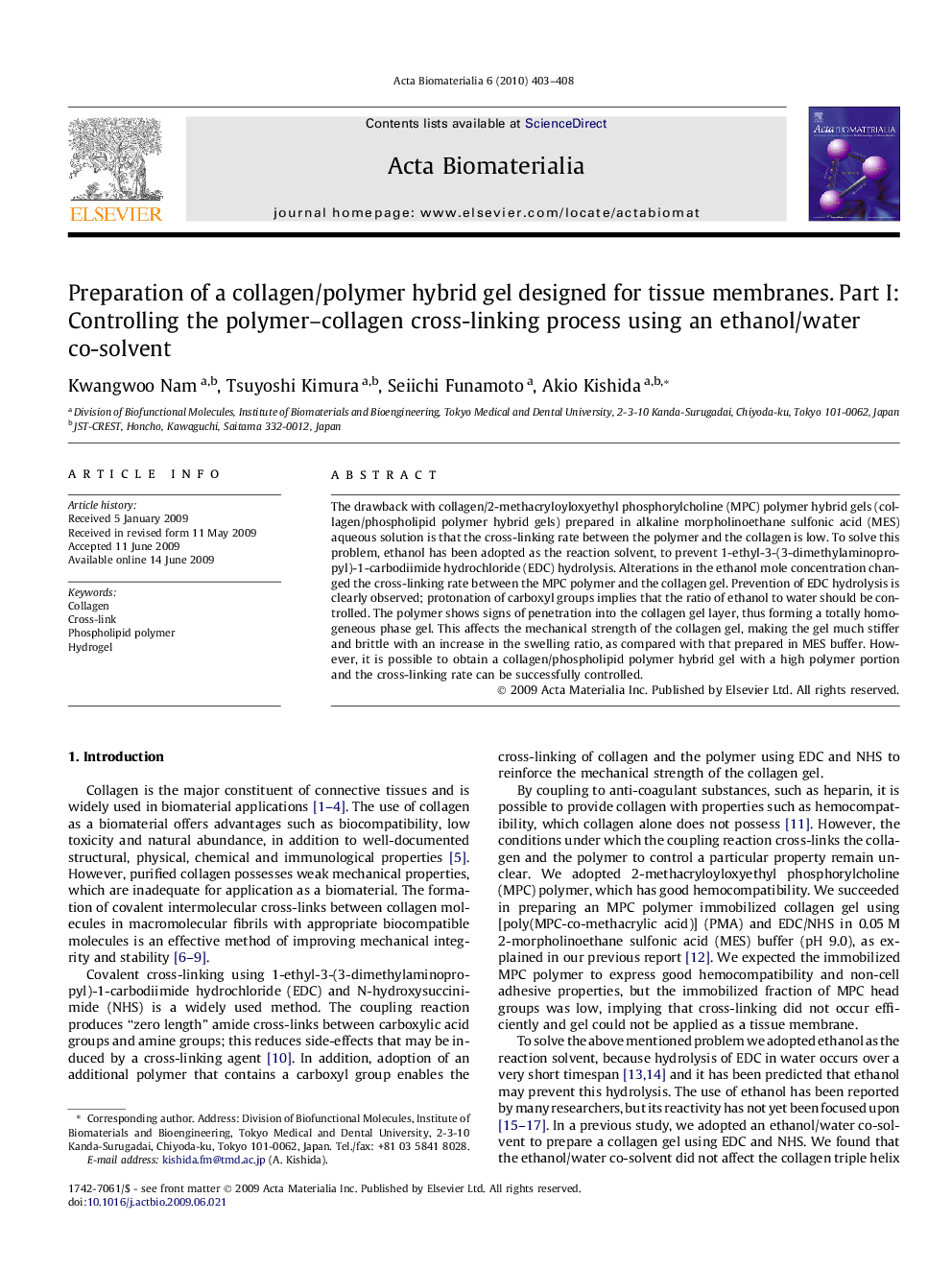| کد مقاله | کد نشریه | سال انتشار | مقاله انگلیسی | نسخه تمام متن |
|---|---|---|---|---|
| 2052 | 99 | 2010 | 6 صفحه PDF | دانلود رایگان |

The drawback with collagen/2-methacryloyloxyethyl phosphorylcholine (MPC) polymer hybrid gels (collagen/phospholipid polymer hybrid gels) prepared in alkaline morpholinoethane sulfonic acid (MES) aqueous solution is that the cross-linking rate between the polymer and the collagen is low. To solve this problem, ethanol has been adopted as the reaction solvent, to prevent 1-ethyl-3-(3-dimethylaminopropyl)-1-carbodiimide hydrochloride (EDC) hydrolysis. Alterations in the ethanol mole concentration changed the cross-linking rate between the MPC polymer and the collagen gel. Prevention of EDC hydrolysis is clearly observed; protonation of carboxyl groups implies that the ratio of ethanol to water should be controlled. The polymer shows signs of penetration into the collagen gel layer, thus forming a totally homogeneous phase gel. This affects the mechanical strength of the collagen gel, making the gel much stiffer and brittle with an increase in the swelling ratio, as compared with that prepared in MES buffer. However, it is possible to obtain a collagen/phospholipid polymer hybrid gel with a high polymer portion and the cross-linking rate can be successfully controlled.
Journal: Acta Biomaterialia - Volume 6, Issue 2, February 2010, Pages 403–408